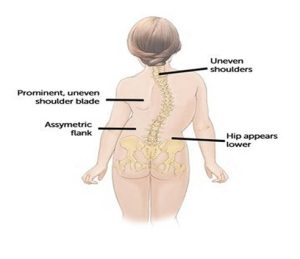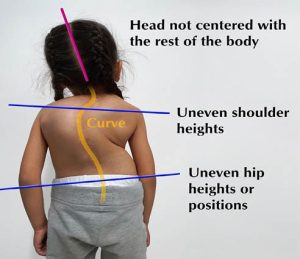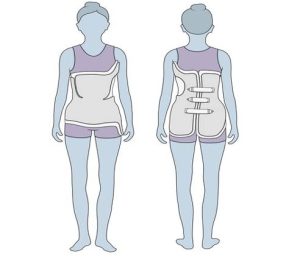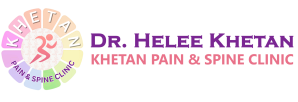Scoliosis is a sideways curvature of the spine that can occur at any age, but it most commonly appears between the ages of 10 and 12. The spine is made up of many small bones called vertebrae. These bones are normally stacked on top of each other in a straight line. In scoliosis, the vertebrae rotate and twist, causing the spine to curve to the side.
There are three main types of scoliosis:
- Idiopathic scoliosis: This is the most common type of scoliosis, and it is the cause of about 80% of all cases. The cause of idiopathic scoliosis is unknown.

- Congenital scoliosis: This type of scoliosis is present at birth. It is caused by problems with the development of the spine before birth.

- Neuromuscular scoliosis: This type of scoliosis is caused by a neuromuscular condition, such as cerebral palsy or muscular dystrophy.

Scoliosis can range from mild to severe. In mild cases, the curve of the spine is small and may not cause any problems. In severe cases, the curve of the spine can be large and can cause pain, breathing problems, and other complications.
The symptoms of scoliosis can vary depending on the severity of the curve. Some common symptoms include:
- Uneven shoulders
- Uneven hips
- One shoulder blade that is higher than the other
- A rib cage that protrudes on one side
- Back pain
If you think you or your child may have scoliosis, it is important to see a doctor for diagnosis and treatment. Early diagnosis and treatment can help prevent the curve of the spine from worsening.
Treatment for scoliosis depends on the severity of the curve. In mild cases, no treatment may be necessary. In more severe cases, treatment may include:
- Bracing: A brace is a device that is worn to help keep the spine in a straight position.

- Physical therapy: Physical therapy can help to strengthen the muscles that support the spine.
- Surgery: In severe cases, surgery may be necessary to correct the curve of the spine.
